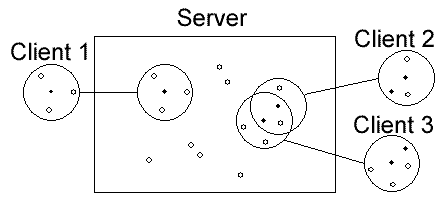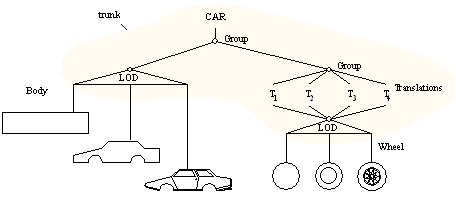 |
Demand-Driven Geometry Transmission
A network protocol for efficient distribution of geometry data
Project duration:
1995-1997
Contact:
Dieter Schmalstieg
|
Description
|
The Demand-Driven Geometry Transmission Protocol
was designed to distribute geometric models on the fly in distributed
virtual environments based on a client-server architecture.
|
Application
|
All multi-user virtual environments on the Internet benefit from this
technology.
|
Problems
|
In highly interactive VR applications, the necessary geometric models must
be transported over the network while the system is running. The data must
become available before it is needed, which is often defeated by a slow
network.
|
Approach
|
The fundamental idea is to organize the world into objects that are
downloaded on demand. Users invoke a client program that
displays the virtual world from the user's point of view and request the
required geometric objects in a timely fashion from the geometry database
server. The client only maintains in memory what can be seen by the user,
which is a relatively small subset of the large world database.
As the user travels through the virtual world, this subset is updated
incrementally. Efficiency is further improved by managing individual
levels of detail rather than complete objects, which reduces
memory and network strain.
|
Publication
|
 Demand-Driven Geometry Transmission for Distributed Virtual Environments
:
Demand-Driven Geometry Transmission for Distributed Virtual Environments
:
D. Schmalstieg, M. Gervautz
|

 Demand-Driven Geometry Transmission for Distributed Virtual Environments
:
Demand-Driven Geometry Transmission for Distributed Virtual Environments
:
